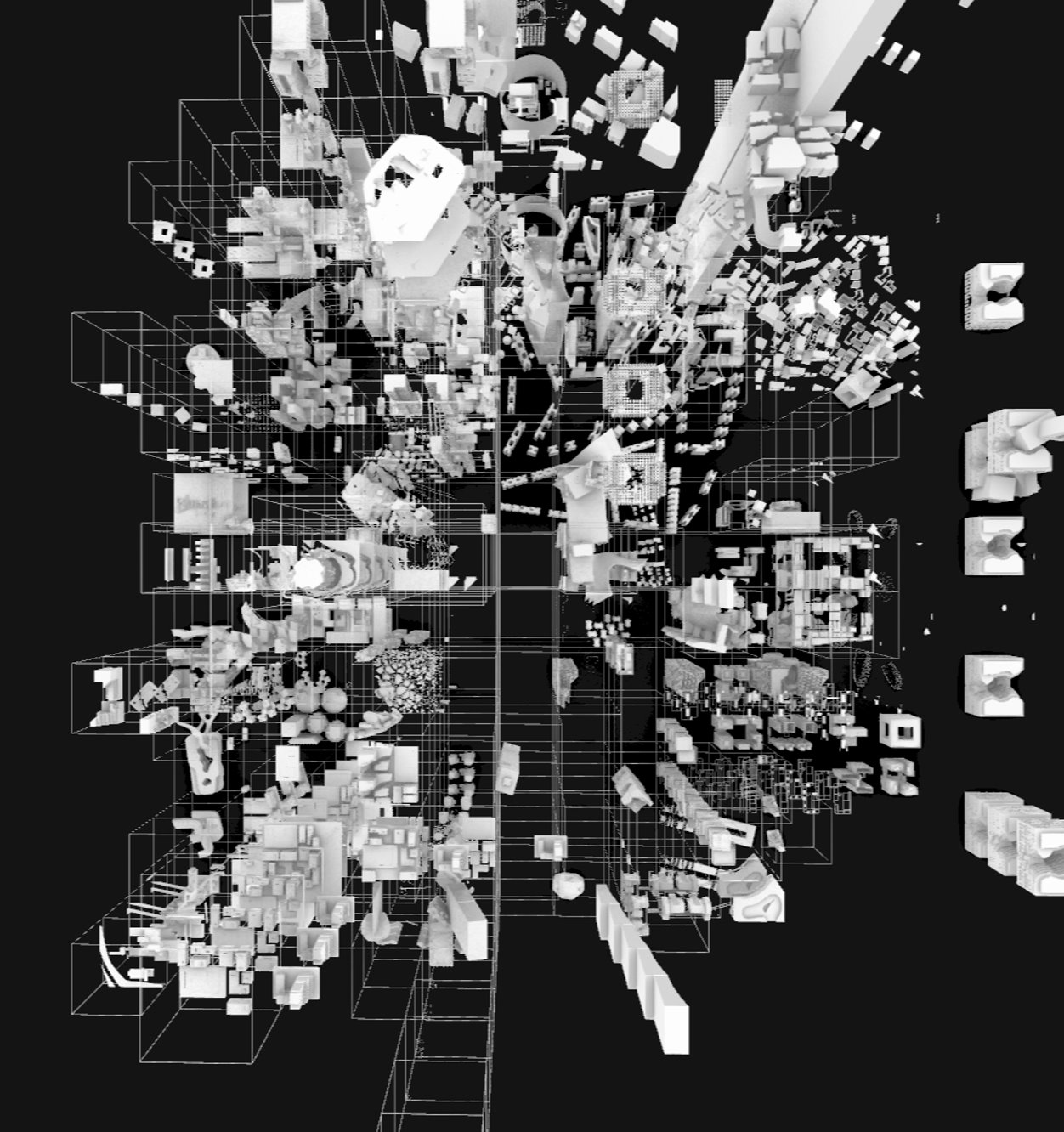InFormed
Manual floorplan generation for high-rise residential buildings is labor-intensive and often overlooks key environmental parameters, limiting the ability to quickly assess performance-based design alternatives. Demo :
Interpretations and Generation through Data

In an increasingly digitised world, the integration of parametric and data-driven design at various scales within the built environment is no longer optional but essential. This thesis cluster brings together research themes that explore the transformative role of computational design and data-informed methodologies in shaping the AEC industry.
While digital tools and processes are advancing rapidly, it is vital to examine their frameworks, workflows, and implications in architecture—the design and materialisation of human-made spaces. Students will propose and investigate how parametric and data-driven approaches can offer innovative solutions to contemporary challenges in the built environment.
Research may involve collecting, analysing, or generating extensive datasets to inform predictive models and optimise design outcomes. By leveraging parametric design and computational techniques, students can explore new ways to enhance architectural creativity, improve spatial performance, and address complex design requirements.
The thesis projects in this cluster aim to develop cutting-edge parametric processes and data-driven strategies for design exploration and optimization, leading to greater efficiency, adaptability, and responsiveness in the built environment.
Manual floorplan generation for high-rise residential buildings is labor-intensive and often overlooks key environmental parameters, limiting the ability to quickly assess performance-based design alternatives. Demo :
Abstract In response to the urgent need for rapid, climate-adaptive housing driven by the climate crisis and global migration, this research explores the architectural potential of combinatorial spatial assemblages. These systems, built through the aggregation of discrete components, offer emergent spatial qualities but are often driven by random or heuristic rules, making them difficult to … Read more
PlacePlate is an AI-driven platform that automates site selection for new restaurants using Barcelona as a case study. It integrates spatial, market, and property data, calculates cuisine-specific suitability and competition-adjusted scores, and suggests optimal neighborhoods. By matching business needs with demand and uncovering undervalued properties, it reduces risk, cuts selection time from months to days, … Read more
An algorithmic roadmap that converts self-organized settlement morphology into clean-energy action: the Energy-Morphology Index mines open roof- and density data, ranks each building’s readiness, and matches “Ready / Promising / Not-Ready” clusters to modular solar toolkits—turning self-organized settlements into engines of energy justice
A Methodological Approach to Urban Morphology and Hybrid Energy Systems in the Global South Project Statement: “Even as we advance in Energy Innovation, our cities continueto grapple with deep inequalities. In this research, I proposerethinking Urban Morphology—not merely as the physicalform of our settlements, but as a strategic lever for equitableenergy solutions. The conceptual Energy-Morphology … Read more
Manual floorplan generation for high-rise residential buildings is labor-intensive and often overlooks key environmental parameters, limiting the ability to quickly assess performance-based design alternatives.
This research explores the optimization of glulam in architectural design by aligning material grading and grain orientation with force trajectories. Combining glulam offcuts and higher-grade timber, the study minimizes waste while maximizing structural efficiency. Computational workflows and generative algorithms are used to design force-aligned components for scalable applications. Prototypes demonstrate enhanced performance and sustainability, offering … Read more
A Methodological Approach to Urban Growth and Hybrid Energy Systems in the Global South Why Global South ? Urbanization in the Global South is a defining trend of the 21st century, with over 90% of urban growth expected to occur in low- and middle-income countries by 2050. This rapid expansion has led to a surge … Read more
Optimising Modular Skyscrapper design through environmental and spatial intelligence
Climate change has become one of the primary drivers of forced displacement around the world, giving rise to the phenomenon known as climate migration. Here are some examples of statistics in the last year, forcing people to move to other cities and countries. Some of the most relevant examples of this displacement, have been occurred … Read more
This research explores the optimization of glulam in architectural design by aligning material grading and grain orientation with force trajectories. Combining glulam offcuts and higher-grade timber, the study minimizes waste while maximizing structural efficiency. Computational workflows and generative algorithms are used to design force-aligned components for scalable applications. Prototypes demonstrate enhanced performance and sustainability, offering … Read more
An Automated Design Solution for Earthquake-Prone Regions How can an machine learning-enhanced parametric design tool develop localized, seismic-resilient low-cost, low-rise modular housing by intelligently integrating material constraints, structural performance, and architectural aesthetics?